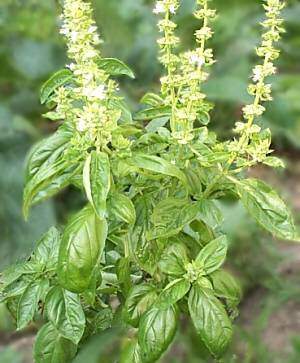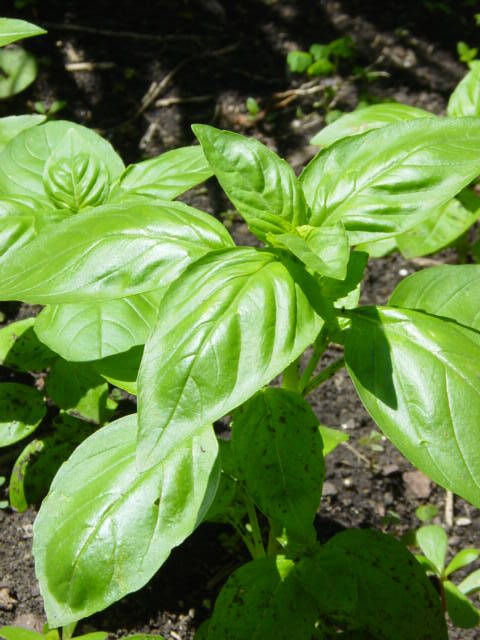
Basil is one of my favorite herbs of all time. Have you ever been to a really good Italian restaurant where they use fresh basil? Magnifico! If you want the name of a fabulous Italian restaurant in Utah County, ask away.
Anyway, because of my love affair with basil, I had to buy some for my herb garden. There are tons of varieties with leaves in different colors—including purple. Basil adopts other exotic flavors such as lemon, lime and cinnamon. Some varieties are large leaved, while others have very tiny leaves, some are great for vinaigrettes and others are better for gourmet pizzas.
Basil loves full sun, and some varieties are commonly used in landscaping for their compact shapes, or low-growing habits. This versatile plant can be found all over the world from Europe, to the Middle East, from South American to India. The leaves and flowers can both be used in cooking, and it can be dried as well for winter use—just add one third as much of dried if the recipe calls for fresh. It is commonly used in pasta, tomato-based dishes, beans, and peppers, and the fresh leaves can be used on green salads or steeped for a refreshing tea.
The seeds are even used as flavoring in breads, or soaked in water and made into a drink in the Mediterranean. When infusing basil, it holds its flavor longest in oils, rather than vinegars. Also, the flavor tends to cook out over time, so basil should be added to a dish shortly before removing it from the heat. There’s a great list of recipes using basil on this site.
Medicinally, the leaves and flowers have been used to combat colds and flu, stomach cramps, migraines, insomnia and depression. It can also be used externally to treat snake bites, insects stings, acne and other skin infections and acts as a mosquito repellent. The seeds soaked into a mucilaginous infusion can be used to treat dysentery, among other illnesses. It makes a great companion plant in the garden, keeping aphids, mites and tomato horn worms away.
It loves full sun, and doesn’t handle freezing temperatures at all, so it must be replanted in the spring for those in colder climates, or it makes a good potted herb if you have a sunny window. In places with cooler summers, like Britain, its best kept indoors unless you are having a very warm summer. You can start seeds indoor in the spring by covering them with a light layer of dirt and keeping it wet. When the plants are large enough to move, pinch them out and transplant into their own containers. Little plants can be put out after all danger of frost is past.

I love basil in my garden. It’s a beautiful plant, and smells wonderful, not to mention the taste. Anything fresh and garden grown always tastes so much better than store bought or dried.
Thanks for the information.
Nichole
Gosh, Heather. I love your articles. They are so information both for cooking and medicinal purposes. Thanks!
Great article, Heather. I love basil too! My favorite recipe:
Tortelloni
Fresh Basil
Garden Tomatoes
Garlic
Balsamic Vinegar
Parmesan Cheese
Yum! I don’t have a garden this year though, so I guess I’ll have to buy my basil from the store.